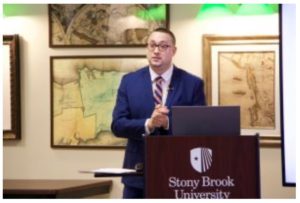
 Established on September 9, 1915, by Dr. Carter G. Woodson, the founders of Black History Month—the Association for the Study of African American Life and History (ASALH)—continue to carry out Dr. Woodson’s transformative work and legacy advocating to teach the historical contributions of people of African descent.
Established on September 9, 1915, by Dr. Carter G. Woodson, the founders of Black History Month—the Association for the Study of African American Life and History (ASALH)—continue to carry out Dr. Woodson’s transformative work and legacy advocating to teach the historical contributions of people of African descent.
With a mission to “promote, research, preserve, interpret and disseminate information about Black life, history and culture to the global community,” the work of ASALH remains critical in ensuring the contributions of African Americans remain central to educating the public beyond Black History Month in February. One of the primary activities of ASALH is establishing the annual theme for Black History Month. Dr. Woodson established Negro History Week in 1926 and realized the importance of providing a theme to “focus the attention of the public,” as explained on ASALH’s website.
This year’s theme, The Black Family: Representation, Identity and Diversity, seeks to shed light on the historical strengths and diversity of the Black family within its diasporic nature, as well as the historical, stereotypical ways in which it has been both revered and vilified.
As an agency dedicated to maintaining and strengthening Black family bonds through kinship, A Second Chance Inc. (ASCI) spoke with ASALH Executive Council member and Associate Professor of Africana Studies & History at Stony Brook University Dr. Zebulon Miletsky to gain insight into the development and important historical context of this year’s Black History Month theme.
Check out the rest of the conversation HERE.
